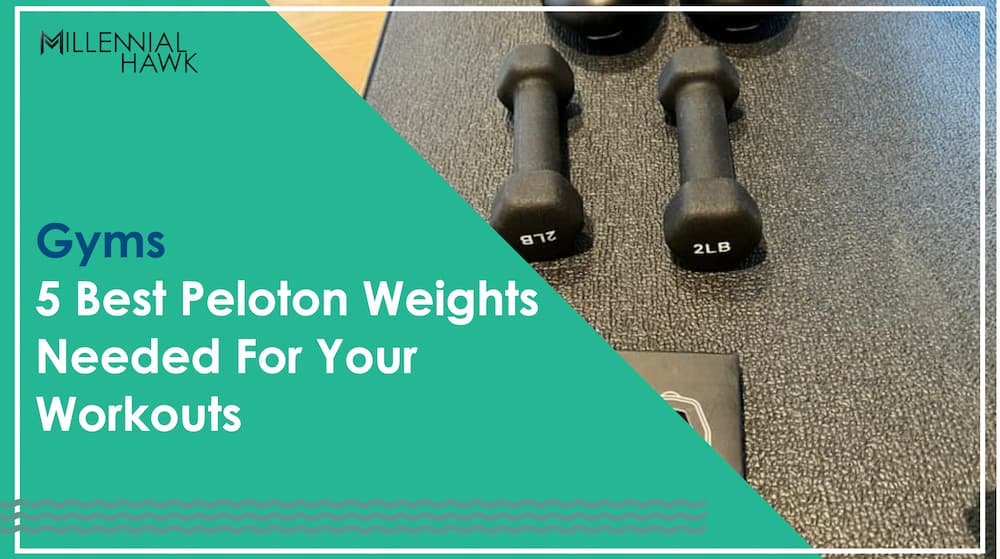
Choosing the right weights for peloton classes will have a big impact on your results. Peloton offers a range of weights, from 5-pound dumbbells to 30-pound dumbbells. On the one hand, these are some of the most sleek dumbbells I’ve ever seen. They are ergonomically designed pairs of cast iron weights featuring a natural rubberized coating for a non-slip grip, allowing you to focus on pushing your limits. These iron weights also feature a sweat-proof, non-slip rubberized coating. However, just like most of the Peloton accessories, the price is quite steep compared to other dumbbell brands such as RBX, Papababe, or ETHOS.
Unless you’re waiting for Peloton weights to be on sale, there are several cost-effective alternatives available. If you want to purchase Peloton hand weights separately, I recommend Amazon Basics Rubber Encased Exercise & Fitness Hex Dumbbells, which offer the best Peloton 15 lb weights (medium weights) under $30. Additionally, you can find the best weight rack for Peloton weights under $150 from Papababe, which includes Peloton light, medium, and heavy weights altogether.
Fancy adjustable dumbbells are not ideal for Peloton workouts due to their instability for exercises like push-ups, rows, and renegade rows, commonly performed by Peloton instructors. These workouts are more effectively and safely executed with sturdy, hexagon-end, or square weights that offer the necessary stability.
We know that Peloton workouts can be intense, and adding weights to your routine can take things to the next level. Whether you’re looking to build strength, tone your muscles, or increase endurance, the right dumbbell rack for Peloton weights can make a big difference. After researching and testing various options, we’ve put together a list of the best Peloton weights on the market.
Millennial Hawk is a reader-supported platform. Purchases made through our links may earn us an affiliate commission at no extra cost to you.
1. RBX Weights Dumbbells Set
BEST PELOTON WEIGHTS FOR LIGHT WORKOUTS
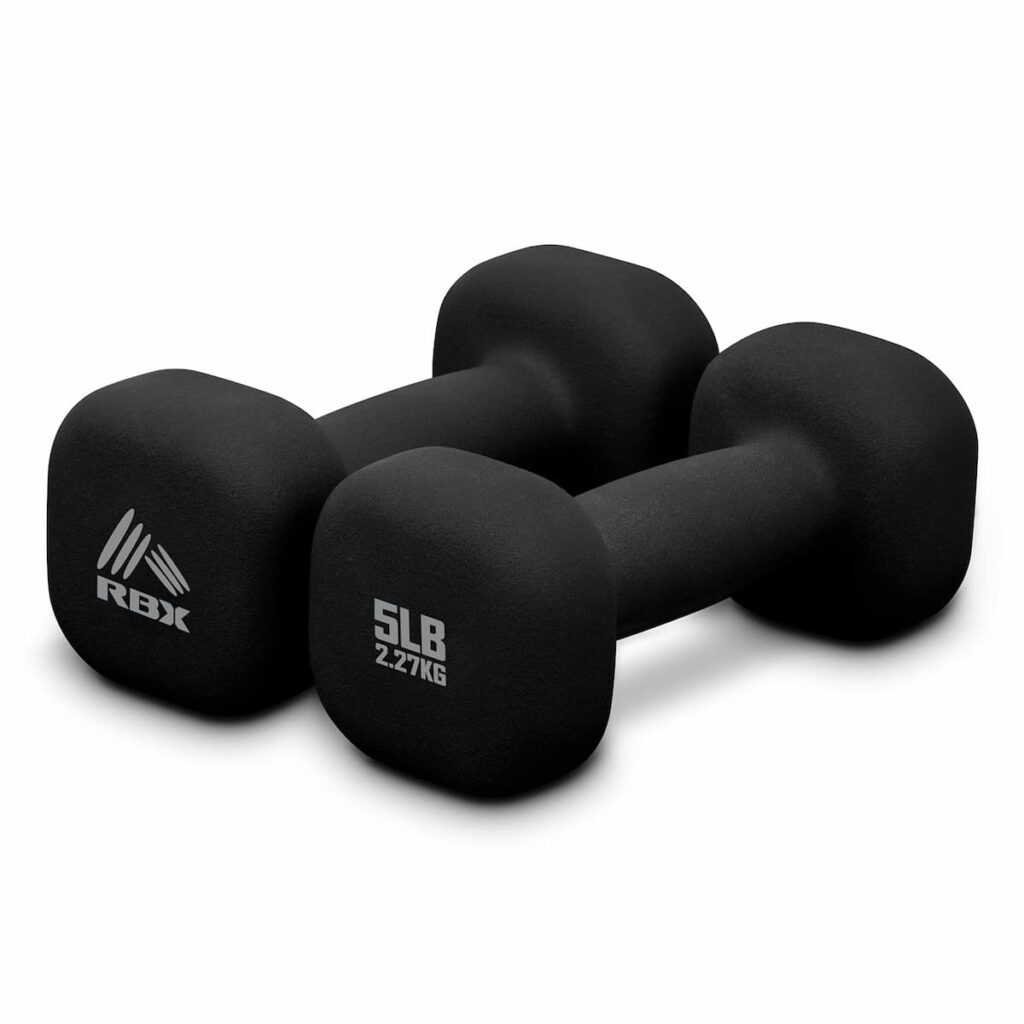
| Pros |
|---|
| The soft coated neoprene exterior provides a comfortable, non-slip grip that absorbs moisture, making them perfect for a variety of exercises both indoors and outdoors. |
| The set is easy to use and can be incorporated into high-intensity interval training (HIIT workouts), low-impact exercises, walking, jogging, cardio routines, and other on-the-go exercises. |
| The set is practical and perfect for fitness workouts and rehab/physical therapy treatments. |
| Cons |
|---|
| The set only includes two Peloton 5lb dumbbells, which might not be enough for those looking for heavier weights. |
| The set might not be suitable for those looking for a wider range of weight options. |
If you’re looking for a Peloton 5lb weights to strengthen and tone your arms and core muscles, the RBX Weights Dumbbells Set might be just what you need. We found that the RBX Weights Dumbbells Set is a great addition to any Peloton Arms and Light Weights workout routine.
The non-slip grip and comfortable neoprene exterior make them easy to use and perfect for a variety of exercises. We also like the practicality of the set, making it perfect for fitness workouts and rehab/physical therapy treatments.
2. Amazon Basics Rubber Encased Exercise & Fitness Hex Dumbbell
BEST PELOTON WEIGHTS FOR STRENGTH CLASSES
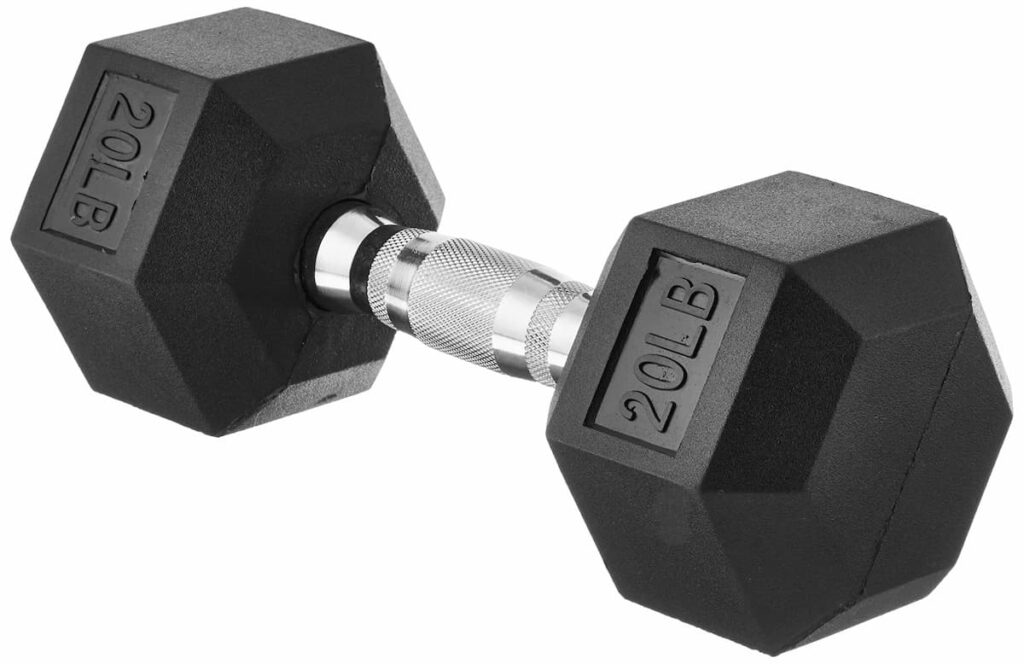
| Pros |
|---|
| The solid cast iron and rubber-encased heads offer lasting strength and durability, making this dumbbell a worthwhile investment for your Peloton strength workouts at home gym. |
| The solid cast iron and rubber-encased heads offer lasting strength and durability, making this dumbbell a worthwhile investment for your home gym. |
| The non-slip grip with textured surface and contoured handle ensures a comfortable hold, allowing you to focus on your workout without worrying about slipping. |
| Cons |
|---|
| The rubber smell of the dumbbell may be strong at first, but it will dissipate over time. |
| The grip could be better, especially for those with larger hands. |
The Amazon Basics Rubber Encased Exercise & Fitness Hex Dumbbell is a great option to consider if you’re looking for durable Peloton Weights without a dumbbell rack for your workouts. In our experience, the Amazon Basics Rubber Encased Exercise & Fitness Hex Dumbbell is the best choice for Peloton strength classes because it is reliable and sturdy, making it suitable for various resistance training exercises.
The 20-pound weight is ideal for most Peloton strength and bootcamp workouts, accommodating different fitness levels, and can be used for a wide range of exercises targeting the arms, chest, back, core, and legs. The rubber encasing of the dumbbell protects against wear and tear, while the hexagonal design ensures stability during your workout. The contoured handle of the dumbbell is comfortable to hold and reduces hand fatigue, allowing you to focus on your form and technique.
Overall, if you are looking for a high-quality Peloton weight that can withstand regular use and provide a comfortable grip, the Amazon Basics Hex Dumbbell is worth considering.
3. Yes4All Rubber Grip Encased Hex Dumbbells
BEST PELOTON WEIGHTS FOR FULL BODY WORKOUTS

| Pros |
|---|
| The rubber grip handle prevents rust, flaking, and chipping over time, while the knurled handle provides a similar grip as a chrome handle. |
| The hexagonal design prevents them from rolling away when left on a flat surface, making them easy to store. |
| The rubber head protects the dumbbell and gym floor from damage that can be caused by heavy use in high-traffic/commercial gym settings. |
| Cons |
|---|
| The rubber grip may not be as comfortable for some of you as a metal grip. |
| The surface may be greasy when new due to the manufacturing process. |
The Yes4All Rubber Grip Encased Hex Dumbbells are the best 20 lb weights for Peloton because their hexagon-shaped heads ensure easy use during sessions and prevent rolling, offering convenient storage. The contoured textured handle has an ergonomic design for a firm yet comfortable feel, making them a great option. We recommend these dumbbells for Peloton full-body strength classes for anyone looking to build and activate muscles, as they are perfect for full-body workouts or targeting specific muscle groups.
These dumbbells are made from premium low-odor rubber, making them perfect for home and gym use. If you want a full dumbbell rack, the company also offers weights ranging from 5 lbs to 50 lbs, allowing you to choose the right level for your needs. The rubber compound used in these dumbbells is similar to the one used in competition bumper plates, ensuring high quality and longevity. The cast-iron hex dumbbell provides excellent assistance for strength training and core development, and will not bend or break after repeated use over a long period.
In conclusion, the Yes4All Rubber Grip Encased Hex Dumbbells are a great investment for anyone looking to build and activate muscles. They are versatile, durable, and perfect for Peloton full body classes or targeting specific muscle groups.
4. CAP Barbell 150 LB Dumbbell Set with Rack
peloton weights rack for all workouts
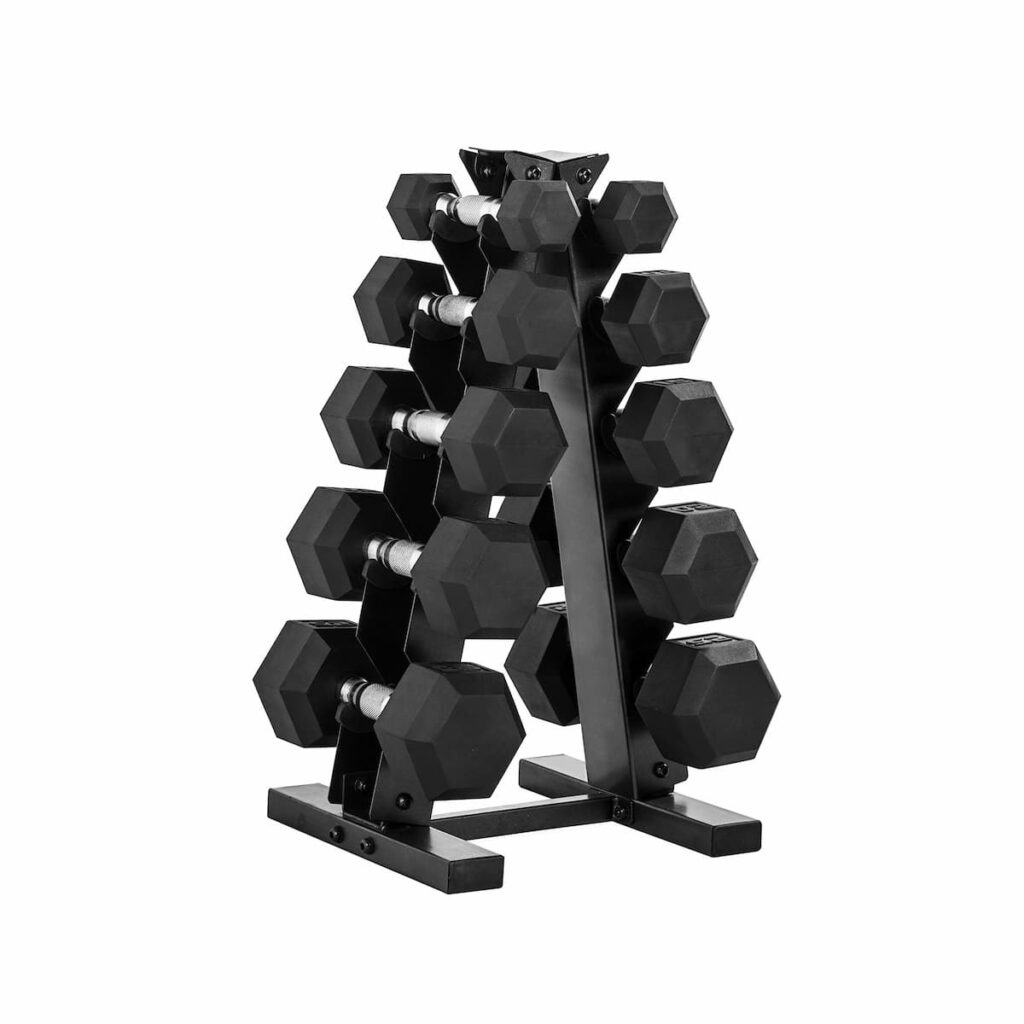
| Pros |
|---|
| The set includes a variety of light, medium, and light weights, making it easy to customize your Peloton programs. |
| The A-frame design of the rack saves space and makes it easy to access and store the weights. |
| The durable construction of the rack and weights ensures that they will last for a long time. |
| Cons |
|---|
| Some people have reported that the rack is not very sturdy and can move when weights are added or removed. |
| The set is quite heavy, which may make it difficult to move around. |
The CAP Barbell 150 LB Dumbbell Set with Rack is the best rack for Peloton weights if you’re looking for a complete dumbbell set. We’ve been using the CAP Barbell 150 LB Dumbbell Set with Rack for a few weeks now and have been impressed with its simplicity and durability. The set includes a pair of 5-pound, 10-pound, 15-pound, 20-pound, and 25-pound coated hex dumbbells and a blue A-frame Peloton dumbbell rack to store the weights. The multiple boxes that the set comes in can be a bit overwhelming at first, but assembly is straightforward to follow.
The A-frame design of the rack is a real space saver, allowing us to store the weights vertically and maximize floor space. The rubber inserts on the rack prevent the dumbbells and rack from getting scratched. The rack is made of steel and finished with a durable powder coat, ensuring that it will last for a long time.
The weights themselves are also very durable. The heads are made from ASTM A48 Class 20 grey iron, joined by a 1018 cold-rolled solid steel handle with an extremely durable coating. The original hex-shaped heads prevent rolling, which is a nice feature. The comfortable, upgraded medium-depth knurling on the handle provides essential grip and security during use. The coating is also durable and effective.
While we’ve been really happy with the CAP Barbell 150 LB Dumbbell Set with Rack, there are a few downsides to consider. Some users have reported that the rack is not very sturdy and can move when weights are added or removed. The set is also quite heavy, which may make it difficult to move around. Finally, the hex shape of the weights can be uncomfortable for some users during certain exercises.
5. Papababe Dumbbell Set
best peloton dumbbells set for bootcamp classes
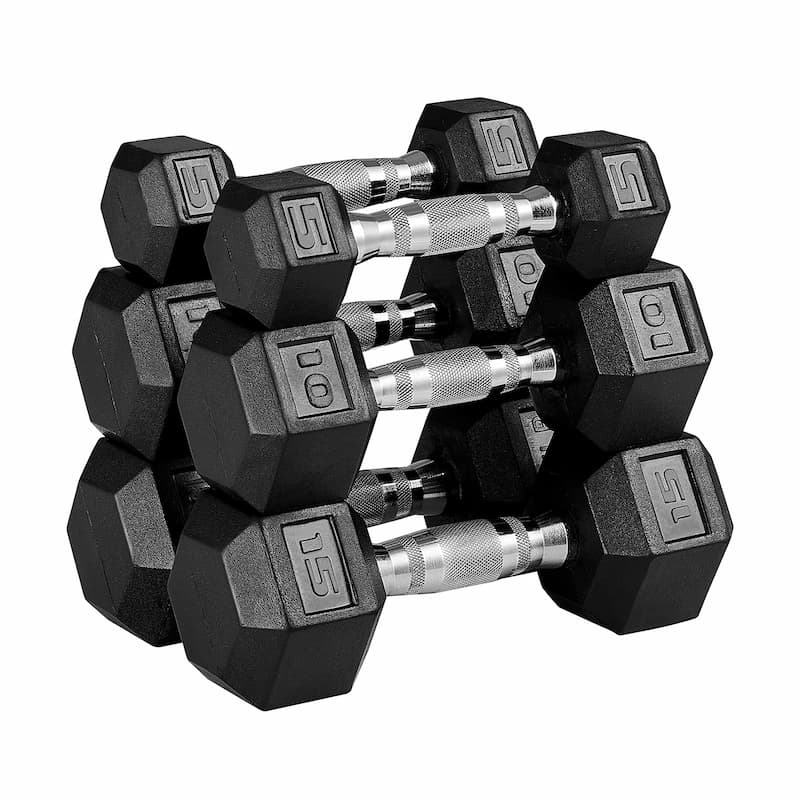
| Pros |
|---|
| The hexagon-shaped heads prevent rolling and make for easy storage. |
| The knurled ergonomic handle provides a comfortable, secure grip that won’t slip during your workout. |
| The rubber coating helps prevent damage to floors and equipment. |
| Cons |
|---|
| The set doesn’t come with a rack, so you’ll need to find a way to store them yourself. |
| The weights only go up to 15 pounds, so they might not be suitable for advanced Peloton Strength classes. |
The Papababe Dumbbell Set might be the perfect fit for you if you’re looking for the best weight rack for Peloton weights. Although the rubber coating can have a strong smell when the dumbbells are first taken out of the package, we were impressed with the Papababe Dumbbell Set, which includes 5, 10, and 15-pound pairs.
The hexagon-shaped heads make them easy to store and prevent them from rolling around on the floor. We also appreciated the knurled ergonomic handle, which provides a comfortable and secure grip during our workouts. The rubber coating helps prevent damage to our floors and equipment, which is always a plus.
However, the set doesn’t come with a stand, so we had to find a way to store them ourselves. Additionally, the weights only go up to 15 pounds, so they might not be suitable for advanced strength programs.
How To Choose Dumbbells For Peloton Home Gym?
When it comes to choosing the best weights for the Peloton home gym, there are a few important features to consider. Here are some factors to keep in mind:
- Weight Range: The weight range is an important feature to consider when choosing Peloton weights. Make sure to choose a weight range that will challenge you, but not be too heavy to lift. The weight range can vary depending on your fitness level and goals, so choose a range that will help you achieve your desired results.
- Material: Peloton weights can be made from a variety of materials, including rubber, metal, and plastic. Choose a material that is durable and will withstand regular use. Rubber-coated weights are a popular option as they are less likely to damage floors or other equipment.
- Design: The design of the weights can also impact your workout experience. We recommend that you look for square or hexagon shapes with a comfortable grip that will enable proper form and technique. Additionally, some weights may feature unique designs or shapes that can add variety to your workout routine.
- Price: Peloton weights are expensive unless you find them on sale in TJ Maxx or Marshalls. Set a budget and choose weights that fit within your price range. Keep in mind that investing in high-quality weights can be a worthwhile investment in your fitness journey.
We recommend selecting a weight that allows you to perform the first 10 reps with moderate difficulty, aiming for a 7/8 on a scale of 1 to 10. Visit local retailers such as Walmart, Costco, sports shops, or gyms where you can try out different weights to gauge your comfort.
Seek guidance from a spouse, friend, coworker, or someone experienced with weights, and if possible, shop together and request their advice. Additionally, consider hiring a personal trainer for 1-2 sessions to demonstrate basic exercises and recommend suitable weights.
In our view, Peloton dumbbells are essential but may not justify Peloton’s price. Smaller off-brand Peloton weights can benefit certain groups like seniors, beginners, or those with mobility issues. We wouldn’t recommend purchasing 1-3 lb weights solely for Peloton arm classes; it’s better to invest in two sets of medium weights specifically for strength and Bootcamp classes. For those with full range of motion and no injuries, using 20-30 lb dumbbells is more effective due to increased resistance.
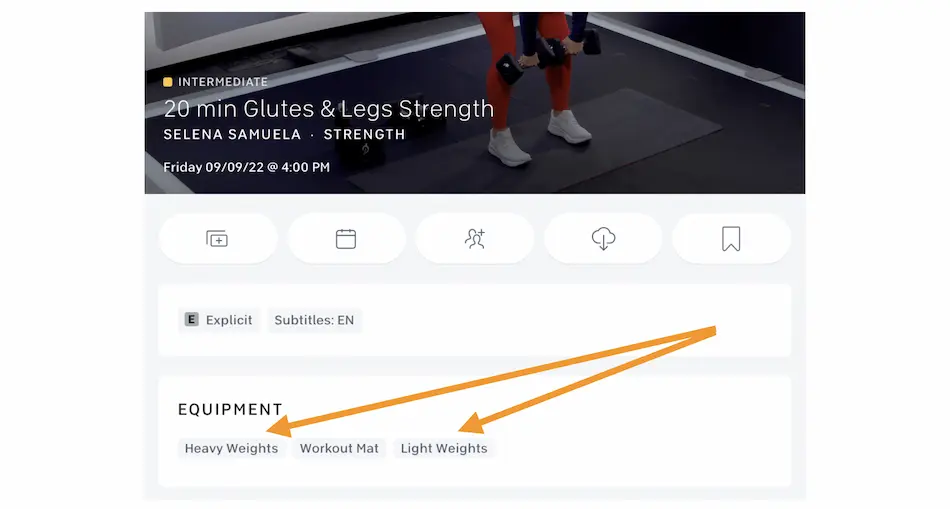
What Weights Do You Need from the Peloton Accessories?
From Peloton accessories, you’ll need various dumbbell pairs ranging from 1-30 lbs for different classes, with cycling using 1-3 lbs and strength/Bootcamp using 10-30 lbs. To maximize your Peloton workout experience, I recommend having a pair of medium and heavy weights.
While some Peloton programs can be completed with just one pair of medium weights, advanced routines like the split training series require all three weight categories. In our experience, lightweight dumbbells (1-3 lbs) are generally not recommended for Peloton workouts, as heavier weights tend to yield better results in terms of calorie burning and overall workout effectiveness.
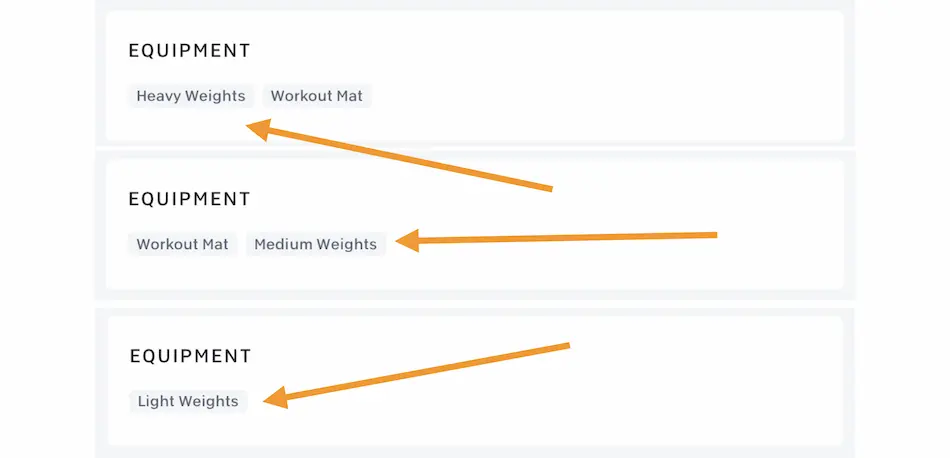
What are Light Weights for Peloton?
Peloton light weights are typically recommended for isolation movements that target smaller muscle groups, such as triceps kickbacks, lateral raises, or front raises. These exercises focus on muscles that don’t require heavy resistance to promote muscle growth but rely on a high number of repetitions to induce momentary muscular failure and metabolic stress. Light weights are commonly used in Peloton arm workouts like “Arms & Light Weights” or “Intervals & Arms Ride,” as well as some shadowboxing classes.
What are Medium Weights for Peloton?
Peloton medium weights are the go-to choice for many strength classes, including exercises like hammer curls, overhead extensions, and advanced core movements. They are also frequently used in Peloton classes designed for weight loss, as they help elevate heart rate and increase calorie burn during workouts. Medium weights are ideal for full-body circuit training workouts where exercises are performed one after another, and they are commonly picked up by Peloton instructors for exercises in the medium rep range (typically 8-12 reps) in various class types, including bike bootcamp and tread bootcamp sessions.
What Are Heavy Weights for Peloton?
Peloton heavyweights are mostly for big moves like squats, lunges, and glute work. I’m more into kettlebells for their versatility and space-saving qualities. In classes, you’ll see pros like ultramarathon runner Robin Arzón rocking the heavier weights.
What Is The Cost of Peloton Weights?
The cost of Peloton weights ranges from $55 to $155, depending on the weight of the dumbbells. The price for used Peloton weights is significantly lower. This table displays the cost of Peloton weights for various weights.
| Weight (lbs) | Cost ($) |
|---|---|
| 5 | 55 |
| 10 | 75 |
| 15 | 95 |
| 20 | 115 |
| 25 | 135 |
| 30 | 155 |
Are Peloton Weights Good?
Yes, Peloton dumbbells are good, but they can be considered slightly overpriced. When you purchase a Peloton bike, you may get a pair of light 1-3 lbs dumbbells as part of the package, and they offer additional rubber-coated cast-iron weights ranging from 5 to 30 lbs for separate purchase. However, for individuals without mobility restrictions aiming to build strength, it’s important to consider weights that provide a sufficient challenge for progressive overload.
Which Peloton Classes and Programs Use Weights?
This table shows which Peloton classes require weights.
| Class Type | Description | Recommended Weights |
|---|---|---|
| Strength Classes | Focus on muscle building and strength improvement with weight-based exercises. | Beginners & Intermediate: 10-15 lb dumbbells<br>Advanced: 20-30 lb dumbbells |
| Bootcamp Classes | Combine resistance training with cycling or running, including both lower and upper-body exercises. | Recommended: 15-20 lb dumbbells |
| Pilates Classes | Emphasize core strength, flexibility, and body awareness; weights may be used for added resistance. | Varies based on preference and fitness level. |
| Other Classes | Various classes where instructors may incorporate weights; weight choice depends on the class. | Depends on the specific class and instructor’s guidance. |
What Size Weights are Recommended for Peloton Strength Classes?
The recommended weight sizes for Peloton strength classes vary based on individual fitness levels and goals. Beginners often start with 10 lb weights, while those with more experience and strength may opt for 20 lb weights. Peloton typically uses lighter weights for arm-focused workouts and bike rides, while medium to heavy weights are commonly used in Peloton strength classes, programs, and challenges, providing a range of options to suit diverse fitness needs and preferences.
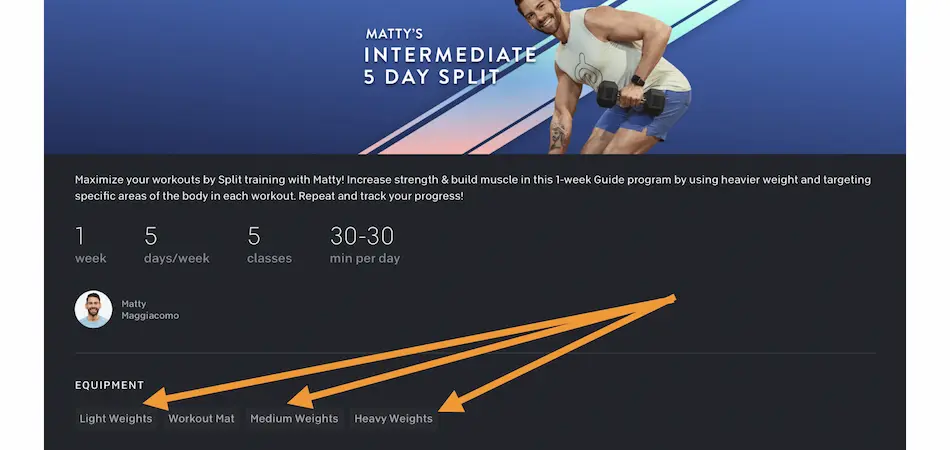
What Size Weights are Recommended for Peloton Bike?
For Peloton bike workouts, 1-3 pound weights are recommended for added resistance and upper body engagement.
What are the Heaviest Weights you can put on the back of a Peloton bike?
You can add weights up to 5 lbs on the back of a Peloton bike.
Are Peloton light weights too light?
Yes, Peloton light weights (1-3 lbs) are considered too light for most individuals unless they have specific circumstances like injuries, seniors, or rehabilitation needs where lighter weights are suitable and effective.
What Weights Do Peloton Instructors Use?
Peloton instructors use Peloton-branded weights, ranging from 10 to 25 lbs, depending on the specific class and exercise. For instance, exercises like goblet squats may involve heavier weights, while overhead presses typically require lighter ones.
How to Store Peloton Dumbbells?
To store Peloton dumbbells effectively, consider keeping them in your house, garage, or basement. Investing in a Peloton dumbbell rack is a recommended storage solution, ensuring easy access to the weights while helping prevent moisture absorption, especially for coated dumbbells.
What is the Best Weight Rack for Peloton Weights?
The best Peloton weight rack is one that is compact, sturdy, and designed to conveniently store a variety of weights, allowing easy access during workouts without taking up excessive space. Peloton weight rack, also known as the Peloton weights stand, is a specifically designed storage solution for organizing and holding Peloton’s dumbbells and other small exercise equipment, offering a convenient and space-efficient way to keep workout areas tidy and weights easily accessible.
Which Dumbbell Rack To Choose For Peloton Weights?
As a whole, there are mainly two types of dumbbell racks – vertical A-frame and horizontal double or triple-decker.
- Vertical Dumbbell Rack: This type of weight rack is perfect for small spaces. All you need is a corner 15 inches long and 15 inches wide. All of the weights are matching in size and are stacked in a nice vertical position. This is great for garage gyms, small PT studios, and even home gym rooms. However, I don’t use this type of weight rack because you cannot place heavier weights, kettlebells, or medicine balls. Also, it’s not that easy to rerack your weights because the handles are positioned on the side.
- Horizontal Dumbbell Rack: A horizontal rack is the best dumbbell rack for peloton weights because it gives you easy access to the dumbbells right in front of you. The horizontal dumbbell rack is also the most popular in commercial gyms because it can stick more weight and it also has space for kettlebells. It usually has 2 or 3 levels. However, it does require a little extra space. I like to place mine next to the wall so it’s not as compressed.
The price of a weight rack will depend if you’re including the free weights or not. The price for a dumbbell rack without weights ranges from $50 to $150. The price for a weight rack package with free weights can range from $300 to over $1000. The dumbbell rack (without the weights) can weigh from 30 to 50 lbs. We recommend getting a heavier rack because it will give you better support and last for longer.
Does The Peloton Have a Weight Rack?
No, the Peloton does sell dumbbells that range from 5 to 30 lbs, but they don’t have a separate weight rack for their dumbbells. It only has an attachment on the bike that allows you to hold one pair of light dumbbells that you use for the rides.
Is it Worth Having a Dumbbell Rack for Peloton?
Yes, it is worth having a dumbbell rack at home for your Peloton workouts, especially when you’re using heavier weights. Fast access makes it easy to customize your peloton classes, as well as helps to track your weights. It also keeps the dumbbells away from pets or kids.
